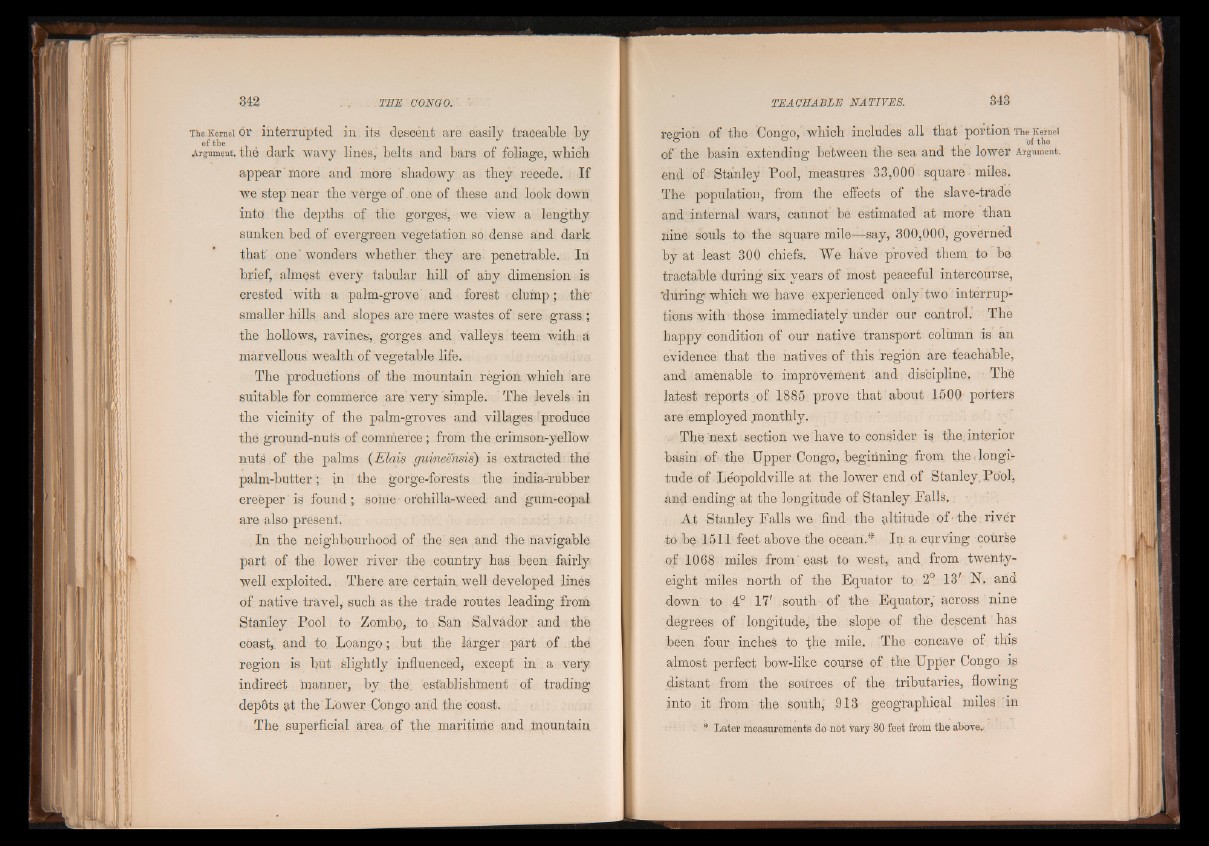
The Kernel or interrupted in. its descent are easily traceable by
of the
Argument, the dark wavy lines, belts and bars of foliage, which
appear'more, and more shadowy as they recede. If
we step near the verge of one of these and look down
into the depths of the gorges, we view a lengthy
sunken bed of evergreen vegetation so dense and dark
that' one’ wonders whether they are penetrable. In
brief, almost every tabular hill of any dimension is
crested with a pal-m-grove" and forest clump; the'
smaller hills and slopes are-mere wastes of sere grass;
the hollows, ravines, gorges and valleys teem with, a
marvellous wealth of vegetable life.
The productions of the mountain region which are
suitable for commerce are very "simple. The levels in
the vicinity of the palm-groves and villages produce
the ground-nuts of commerce; from the crimson-yellow
nuts of the palms (Elais guineehsis) is extracted the
palm-butter;. in the gorge-forests the india-rubber
creeper is found; some-orchilla-weed and gum-copal
are also present.
In the neighbourhood of the'sea and the navigable
part of the lower river the country has been fairly
well exploited. There are certain, well developed lines
of. native travel, such as the trade routes leading from
Stanley Pool to Zombo, to San Salvador. and the
coast,, and to Loango; but the larger part of the
region is but slightly influenced, except in . a very
indirect manner, by the establishment of trading
depots at the Lower Congo, and the coast.
The superficial area of the maritime and mountain
region of the Congo, which includes all that portion The Kernel
, . o f th e of the basin extending between the sea and the lower Argument,
end of ^ Stanley Pool, measures 33,000 square - miles.
The population, from the effects of the slave-trade
and internal wars, cannot be estimated at more than
nine souls to the square mile—say, 300,000, governed
hy at least 300 chiefs. We have proved them to be
tractable during six years of most peaceful intercourse,
'during which we have experienced only two interruptions
with those immediately under our control. The
happy condition of our native transport column is an
evidence that the natives of this region are teachable,
and amenable to improvement an d , discipline. The
latest reports of 1885 prove that about 1500 porters
are employed monthly.
The next section we h&Ve to consider is the:interior
basin, of the Upper Congo, beginning from, the/longitude
of Leopoldville at the lower end of Stanley. Pool,
and ending at the longitude of Stanley Falls.;
At -Stanley Falls we find the altitude of-the river
to be 1511 feet above the ocean.* In a curving -course
of 1068 miles from' east to west, uud from twenty-
eight miles north of the Equator to 2° 13' 1ST, and
down' to 4° 17' south of the Equator,' across'nine
degrees of longitude, the slope of the descent has
been four inches to the mile. The concave of this
almost perfect bow-like course of the Upper Congo is
distant from the sources of the. tributaries, flowing
into it from the south,' 913 geographical miles in
* Later measurements do not vary 30 feet from the above